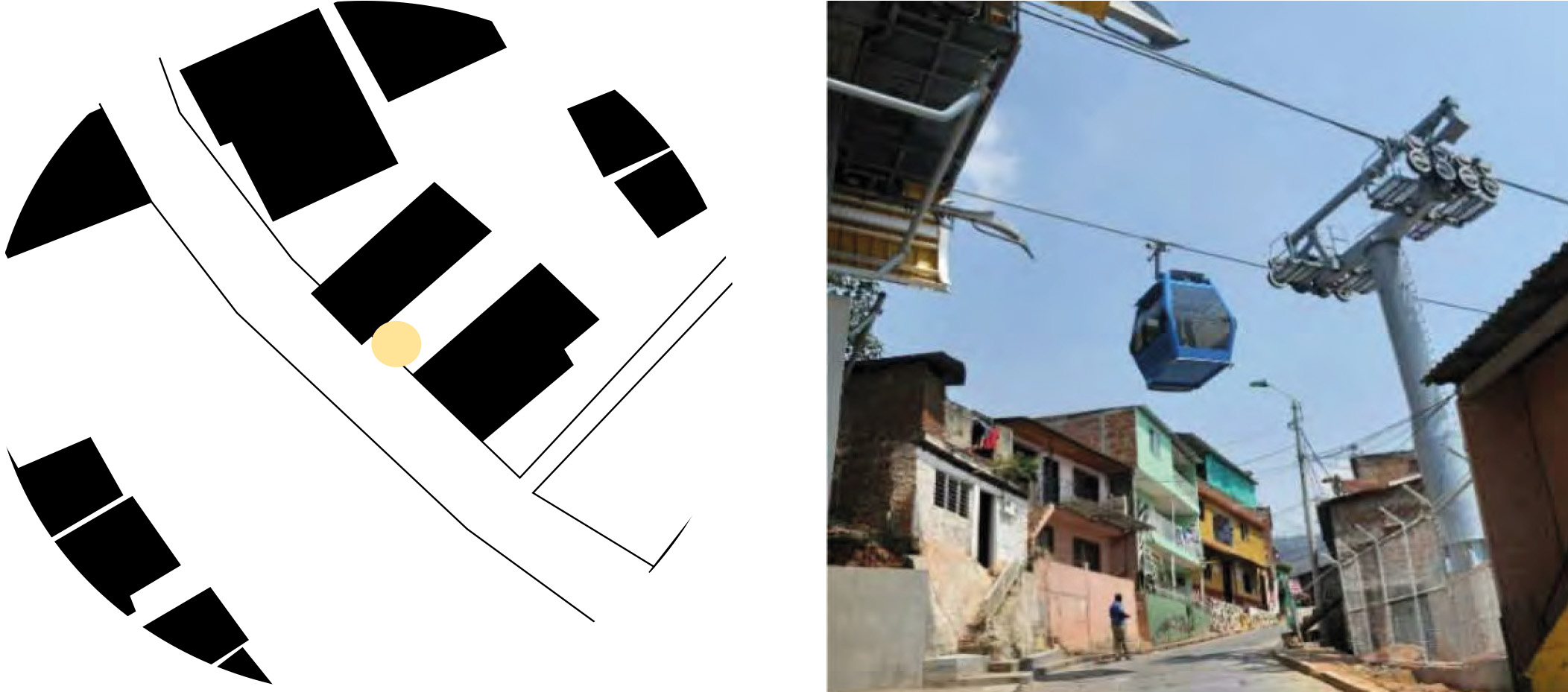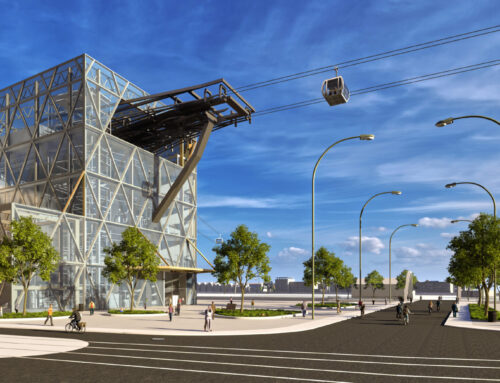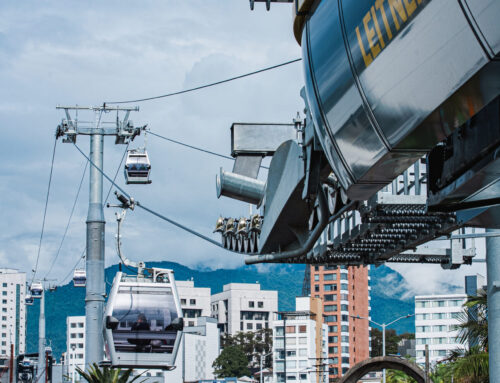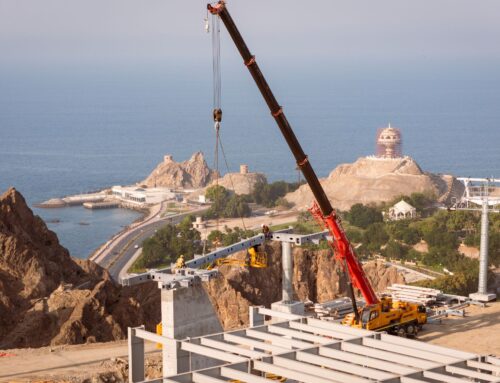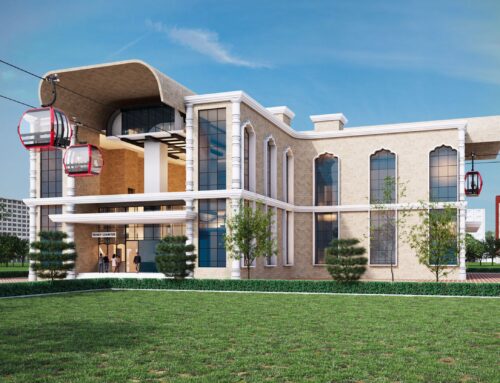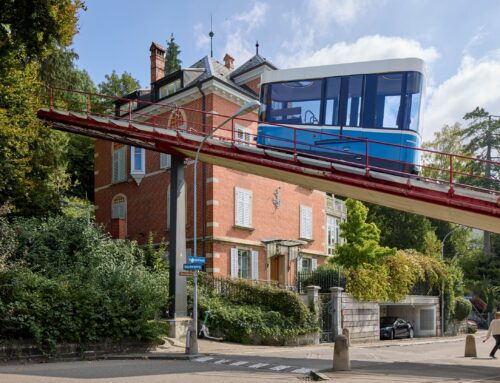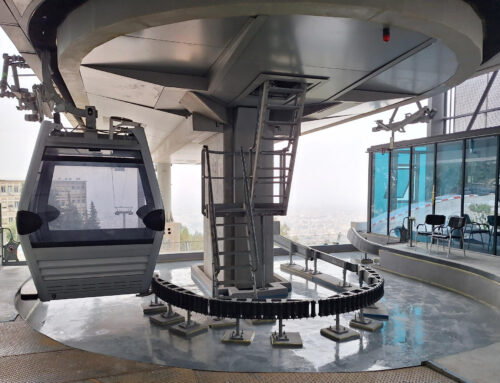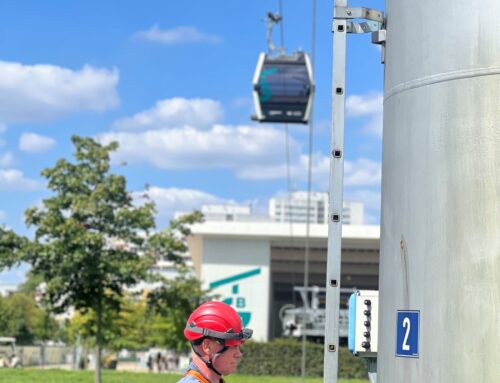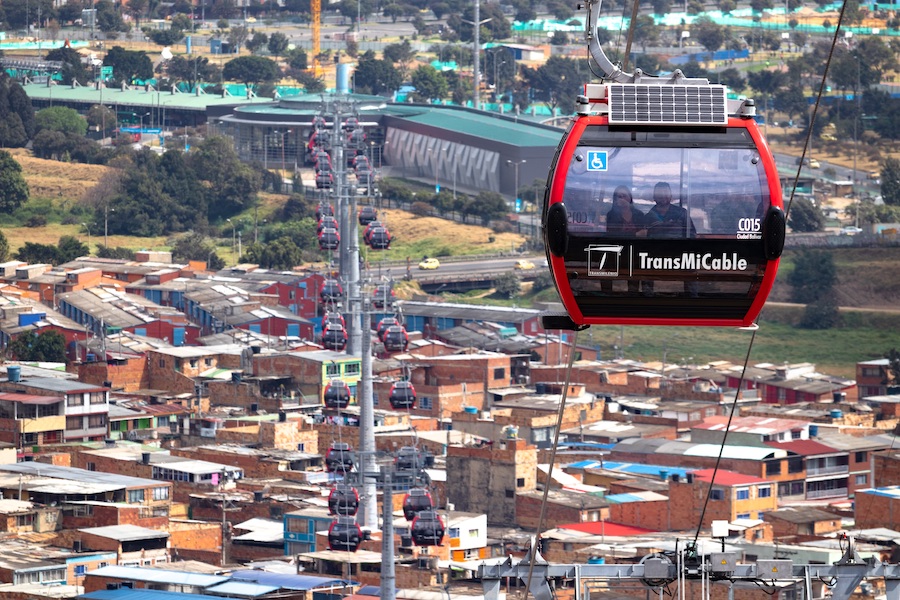
Cities, SI Urban 1/2024
How supports can enrich public spaces
Supports carry the cable of a cable car and thus link up the stations of a cable car system. They are placed at strategic points along the route to prevent the cable from becoming overstretched or unstable.
Yet cable car supports have more than just a technical function; if used correctly in cities, they also display social and spatial potential. Supports and their surroundings can create new social spaces for people to meet, play sports or enjoy culture. But positions in harmony with nature are also possible.
Rio de Janeiro:
Support 3 is erected at the end of a road, on an illuminated, concrete railway platform. There is a view of the city, which offers urban potential.

Rio de Janeiro:
Support 7 is at the end of a road, on an illuminated, concrete railway platform. There is no security infrastructure, even though the platform is accessible.
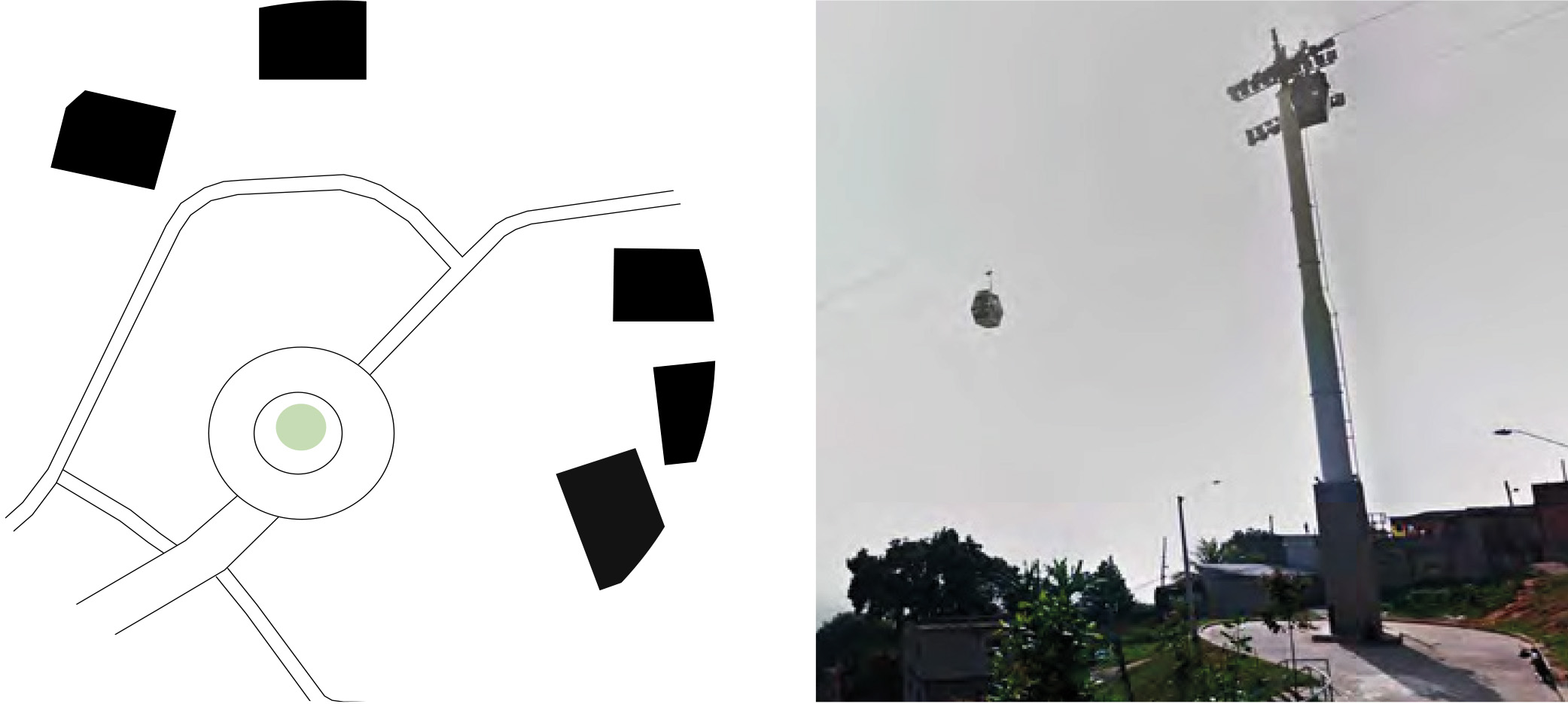
Rio de Janeiro:
Support 9 is located next to a small square in which play equipment and several tables are set out. The square offers an unobstructed view of the city and serves as a public space.
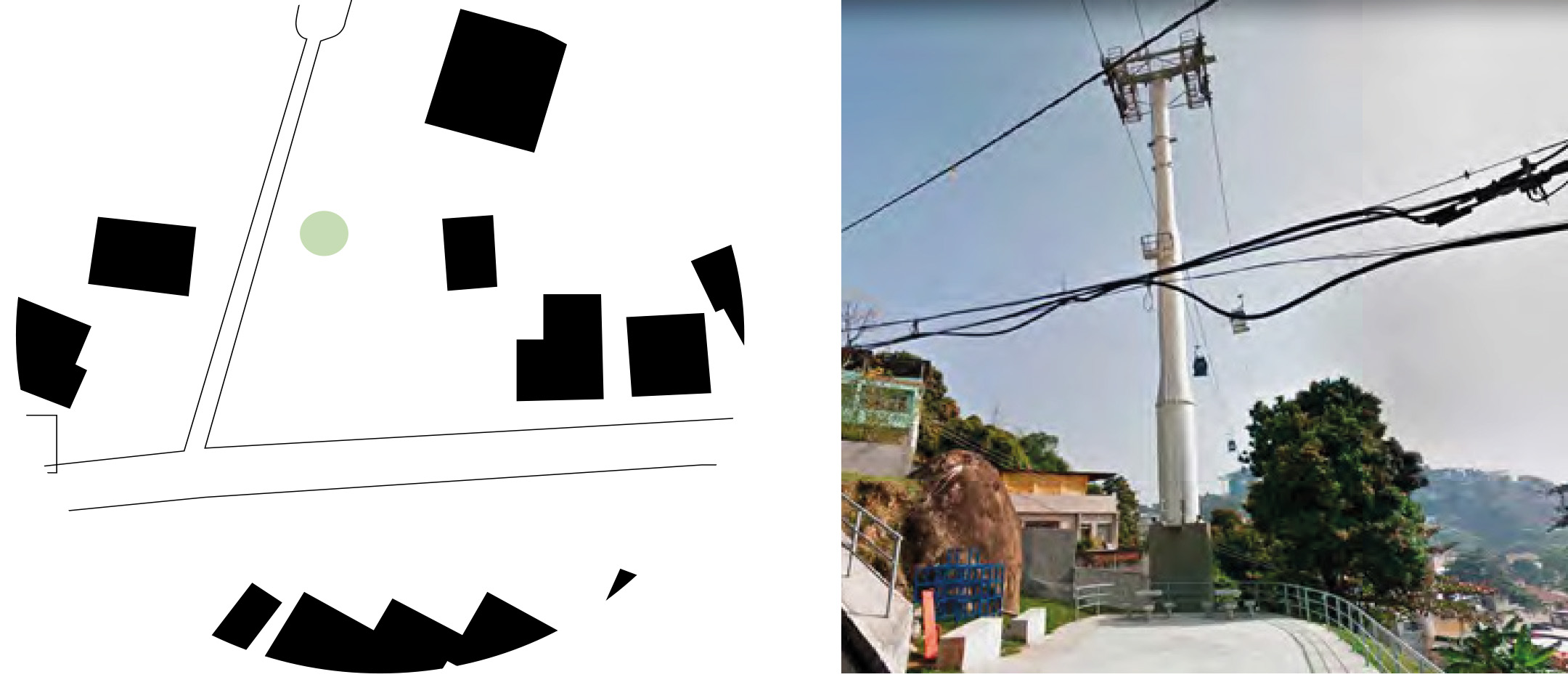
Rio de Janeiro:
Support 19 is in front of an accessible, concrete railway platform, which is used as a car park.
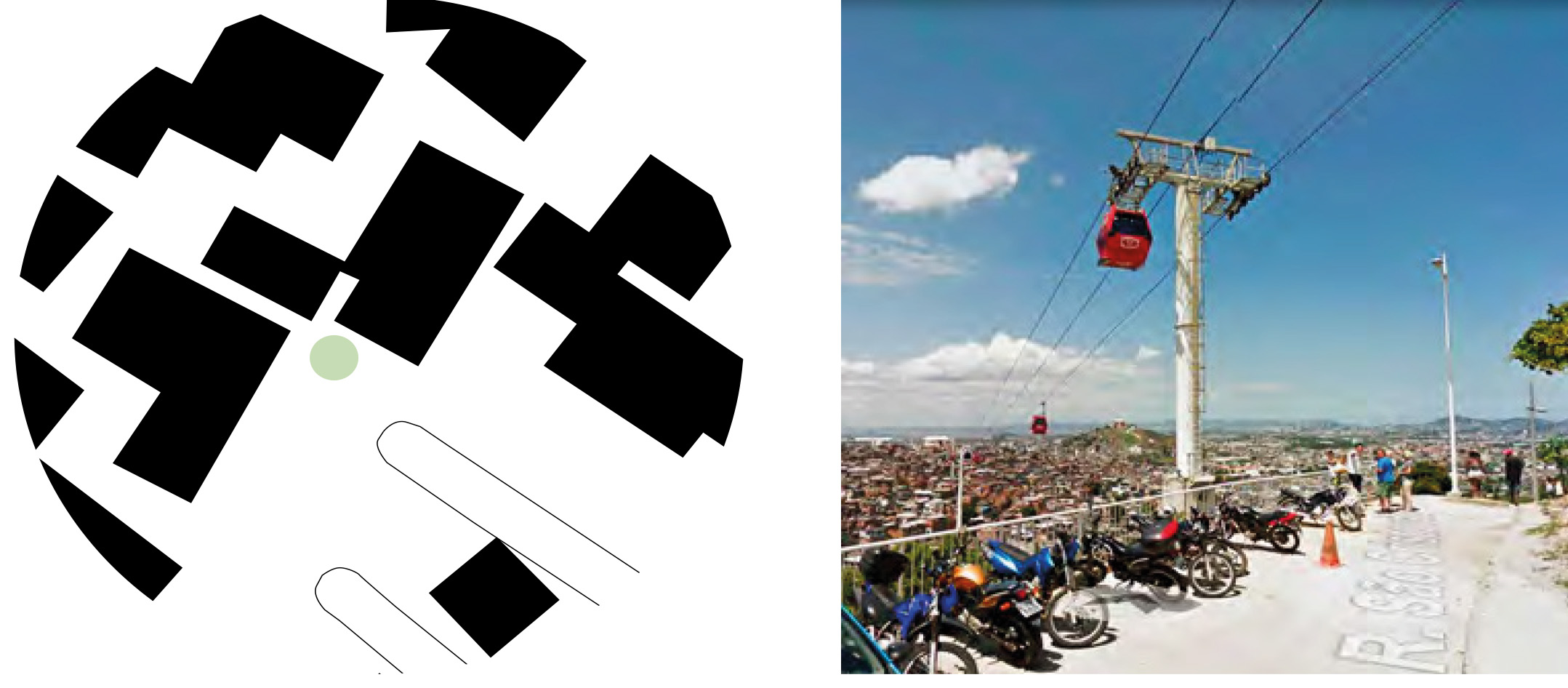
Study of supports
The diversity of uses for cable car supports is demonstrated in a comparative study by Vienna University of Technology. The Austrian researchers examined three urban cable cars in Latin America: “Teleferico do Alemao” in Rio de Janeiro (Brazil) with a total of 14 supports, “TransMiCable” in Bogotá (Colombia) with 15 supports, and “Mio Cable” in Santiago de Cali (Colombia) with 14 supports.
The researchers specifically analysed selected supports on the basis of their social potential. On a scale from 1 to 5, they assessed the aspects of safety, environment, surroundings, accessibility and environmental sustainability.
This produced a potential index and consequently an evaluation for urban planning. The key findings from selected supports can be seen as captions in this article.
Bogotá:
Support 15 is in the central square of a district. This was redesigned after construction of the cable car, and a cultural centre, amphitheatre and play areas were created.
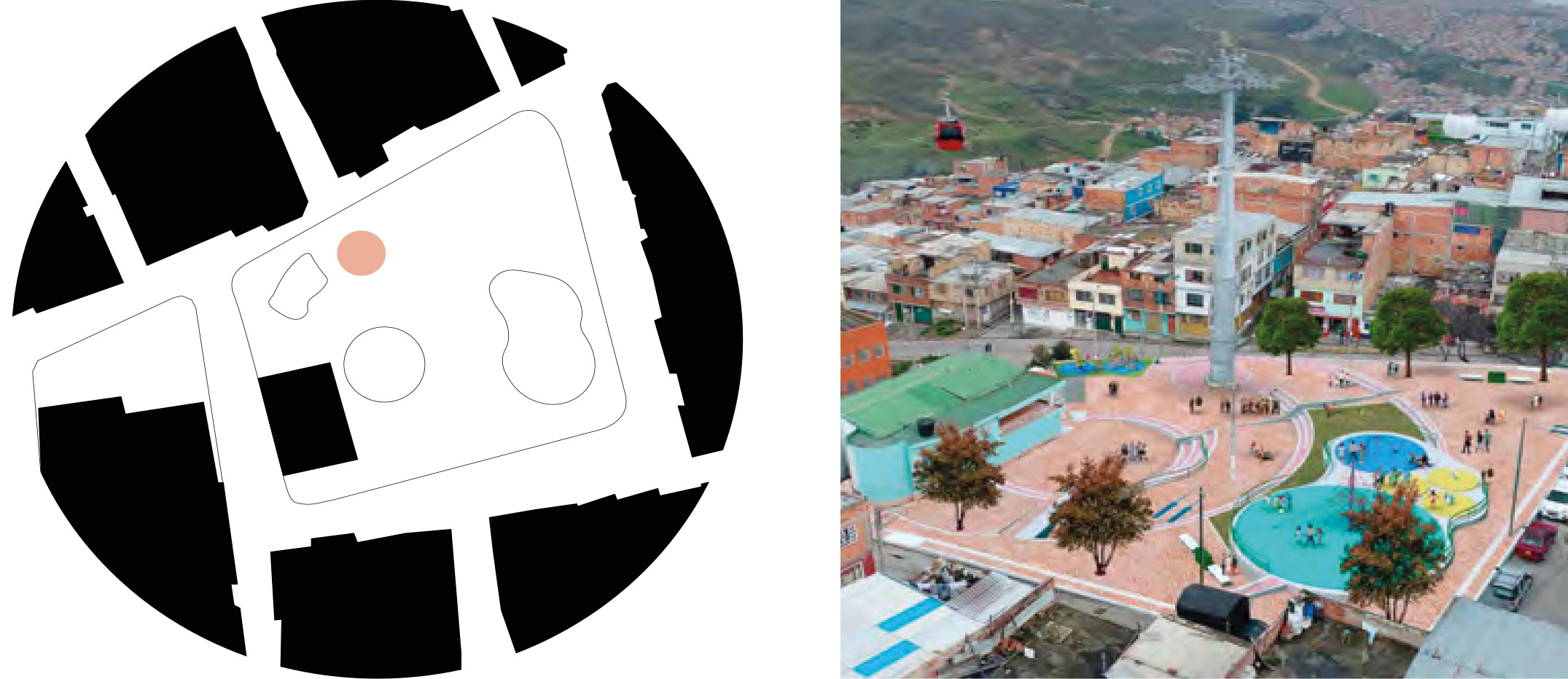
Bogotá:
Support 16 is in Juanchito Pinpon Park. Here too, the square was redesigned and, as at support 15, a cultural centre, amphitheatre and play areas were created.
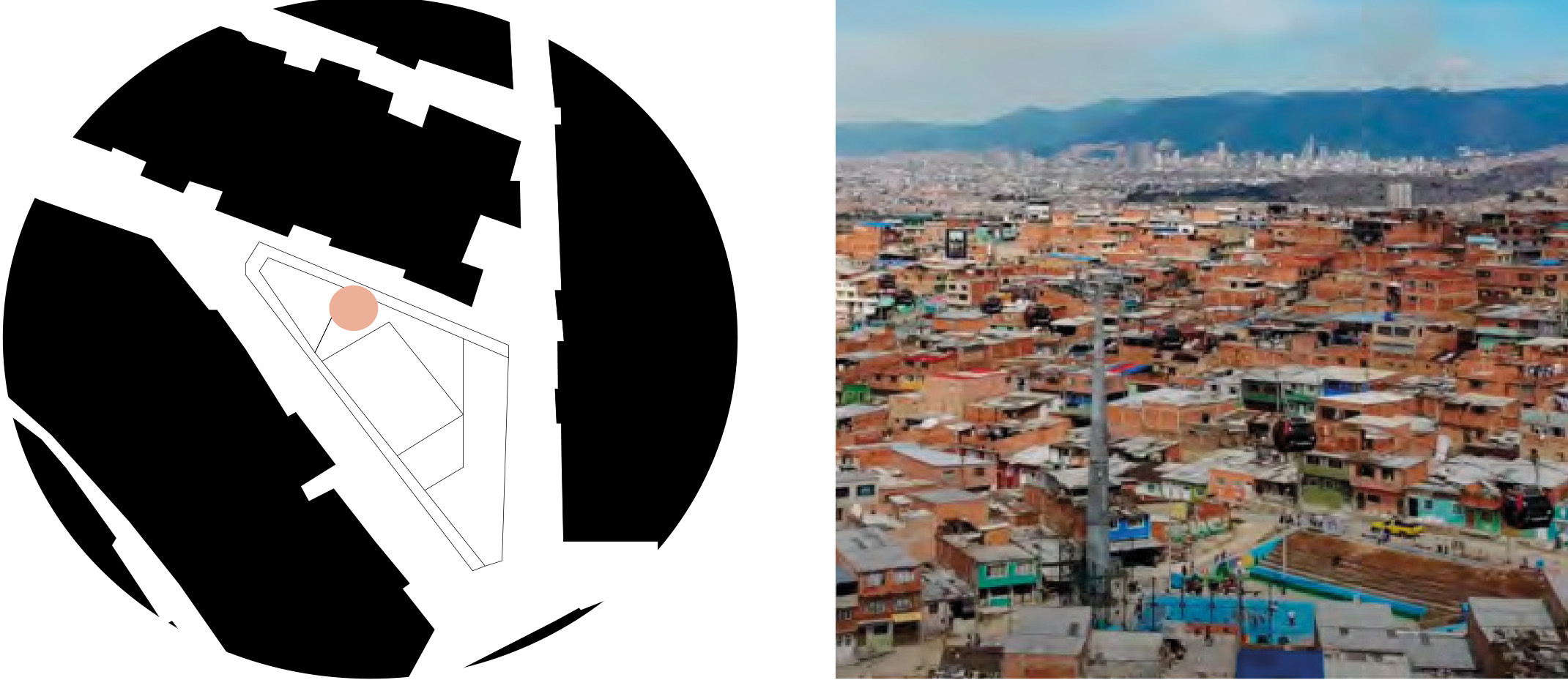
Bogotá:
Support 19 is directly in front of the third TransMiCable station. A small square with graffiti and a small sales stand have been set up around it.
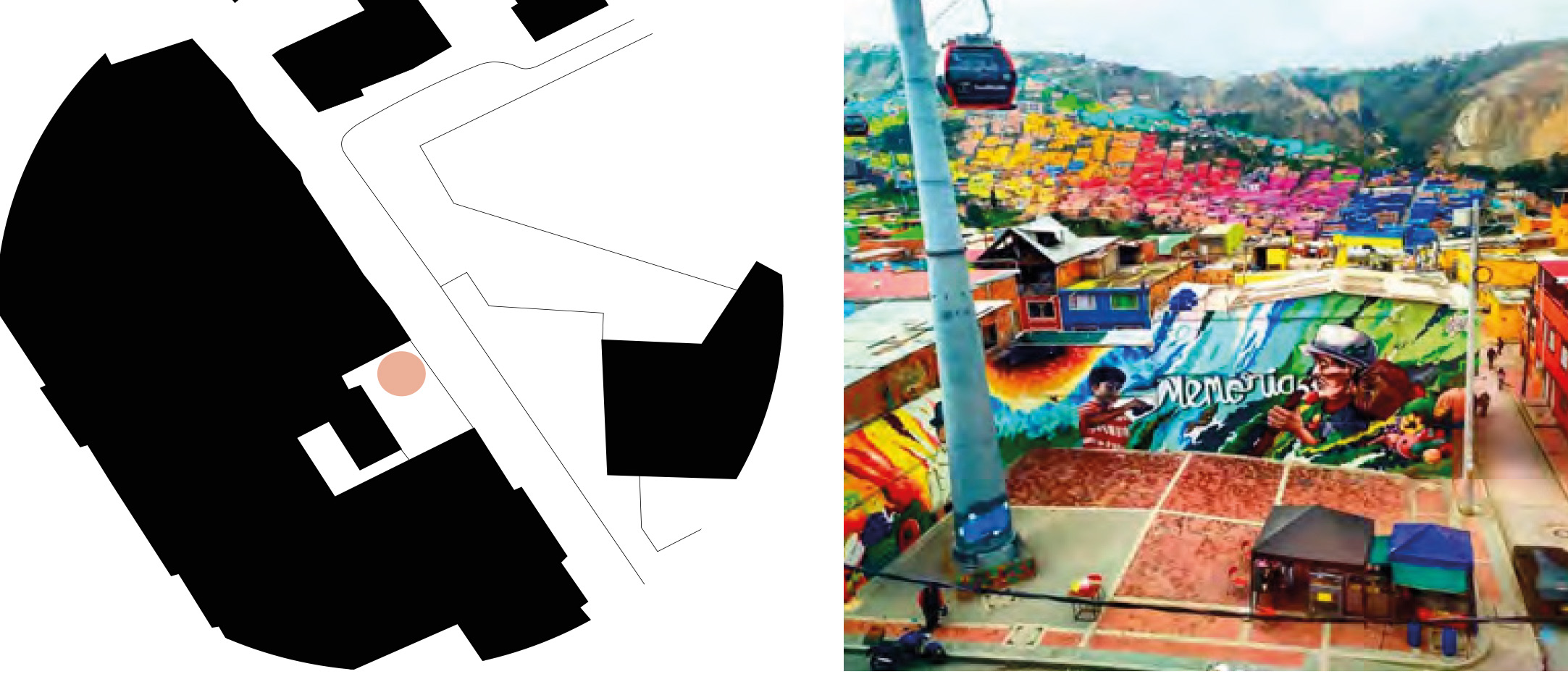
Bogotá:
The space around support 21 is still empty. A cultural centre is to be created here. The difference in quality of the space between this support and the other supports is interesting.
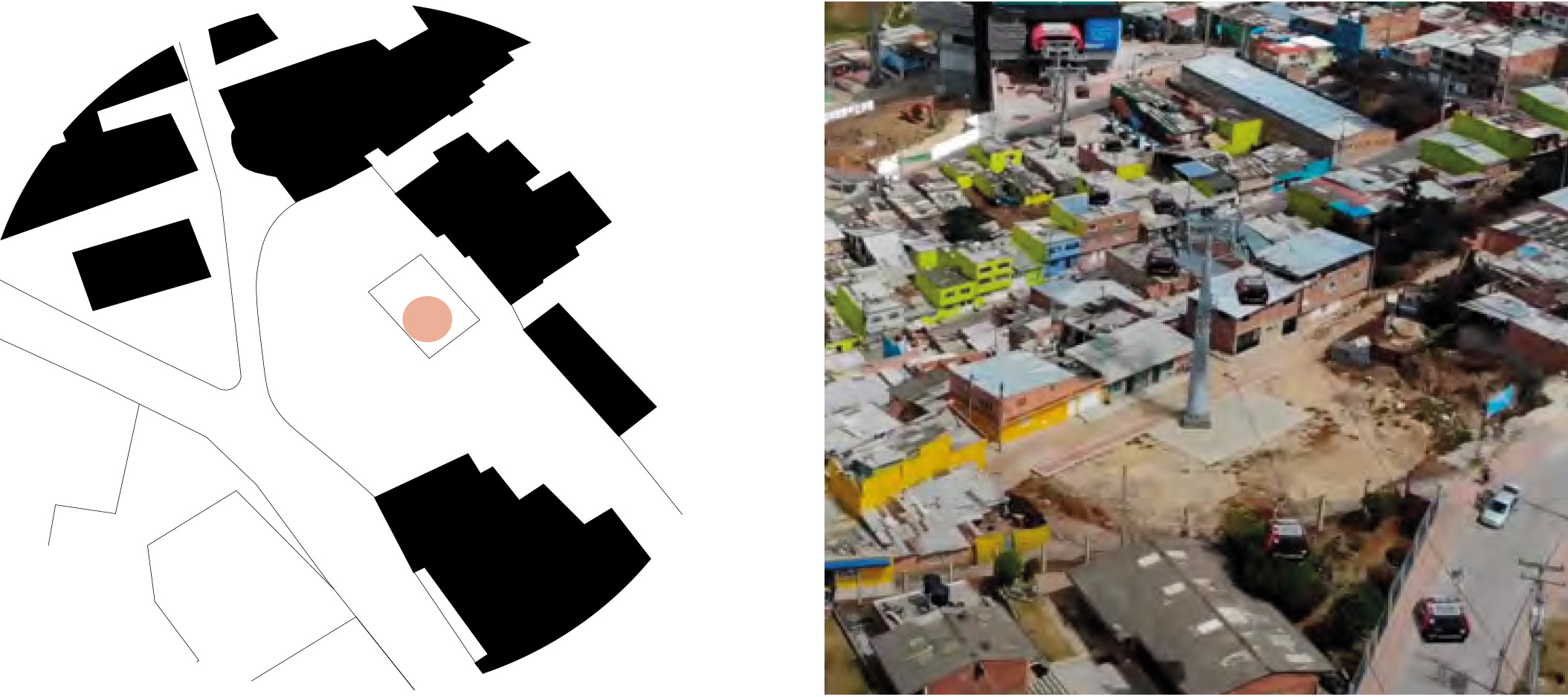
Results
In summary, supports can serve as locations for viewpoints, small markets and parks. Furthermore, play areas, safety points, cultural and social centres often emerge around cable car supports. Car parks too are readily built around supports.
Yet there are also supports located on wasteland or in nature, which are hardly noticed. Some supports are, however, situated within dense construction, which diminishes the potential for spatial development.
Moreover, different levels of accessibility and infrastructure protection can be found, from unprotected supports to bases with military screening. With attractive design, even more social potential could be teased from cable car supports here.
Santiago de Cali:
The base of support 2 is covered with trees and not visible from the road. The support has little impact on the population and is well integrated into the natural surroundings.

Santiago de Cali:
Support 3 is in the courtyard of several buildings. It has the potential to become a feature, as it has a large, open space outside the district.

Santiago de Cali:
Support 10 is located in the middle of the district and the base is surrounded by a gate. There is limited potential for social space, owing to the lack of open space.
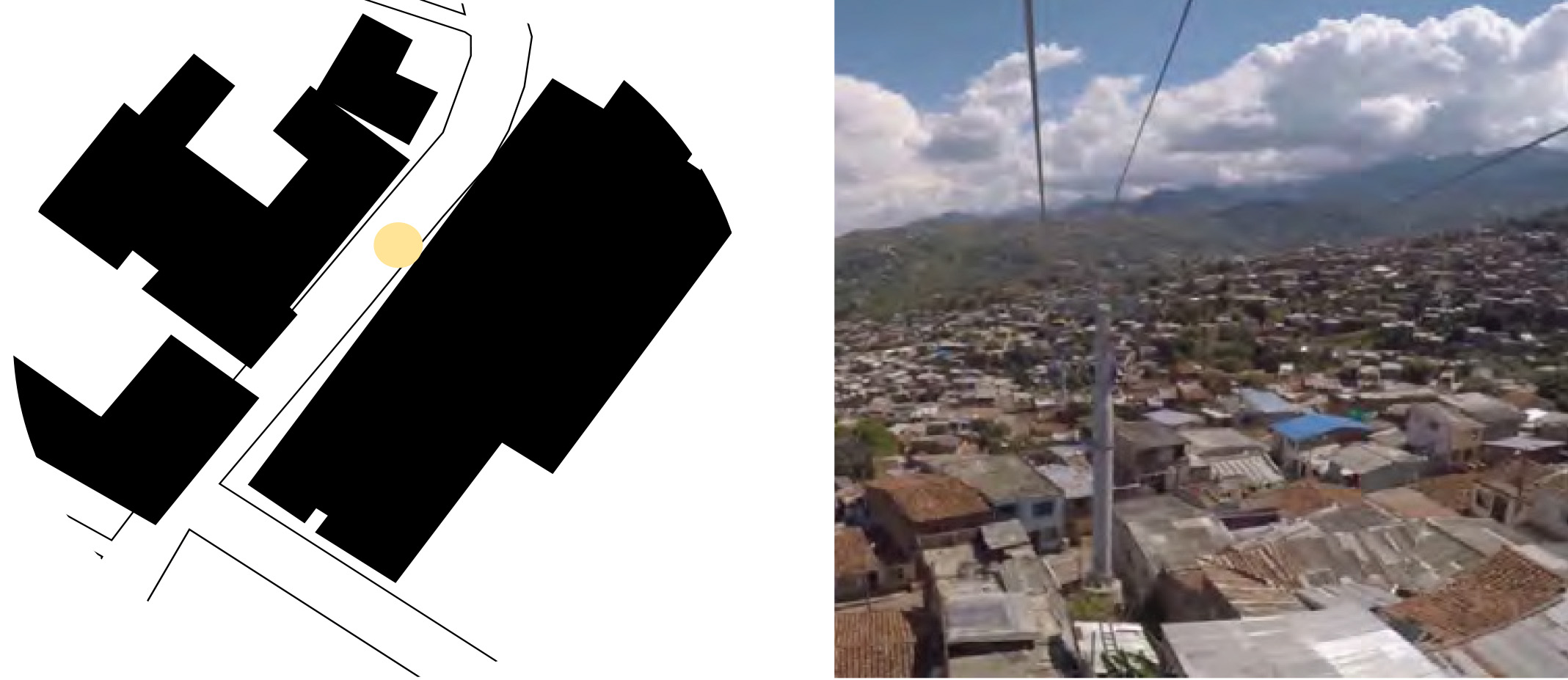
Santiago de Cali:
Situated between buildings, support 12 occupies little space. From an aesthetic perspective, with the surrounding fence, it appears more military than neighbourly.
